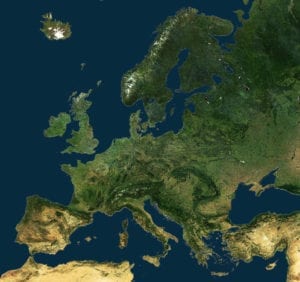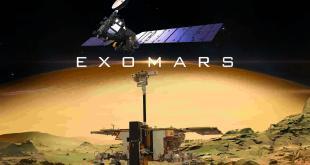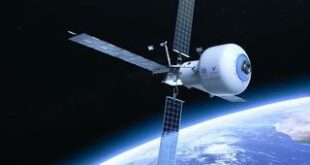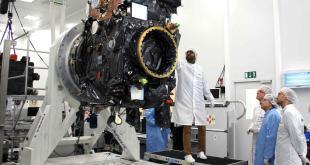 As part of the partnership between SpaceWatch.Global and the European Space Policy Institute, we have been granted permission to publish selected articles and briefs. This is ESPI Briefs No. 55: ‘Global EEE supply chain disruptions and implications for the space sector’, originally published in January 2022.
As part of the partnership between SpaceWatch.Global and the European Space Policy Institute, we have been granted permission to publish selected articles and briefs. This is ESPI Briefs No. 55: ‘Global EEE supply chain disruptions and implications for the space sector’, originally published in January 2022.
1. Major disruptions in the global EEE supply chain highlight critical dependence

The Covid-19 pandemic has led to unforeseen levels of uncertainty regarding the supply of various technological goods and has highlighted the volatility associated with accessing specific resources on global markets. In particular, successive outbreaks and water shortages have significantly hampered the manufacture of critical electrical, electronic and electro-mechanical (EEE) components such as semiconductor chips, on which many sectors (including space) are dependent. The circumstances thus emphasized the existing global dependence on countries specialised in their production such as Taiwan, which accounts for almost half of the world’s chip production, and exacerbated strategic rivalries as governments were increasingly inclined to defend their national interests on international markets.
In this regard, administrations have taken additional steps to ensure stronger national access to these resources. The United States, for instance, is in the process of passing the CHIPS Act which is projected to include $52 billion in investments to enhance domestic semiconductor production in an effort to reduce dependency on China. Similarly, the EU Commission has indicated its intention to publish a proposal for a European Chips Act in its 2022 Work Programme. The Commission underlined that the Act aims to secure Europe’s supply of microchips, in particular as a response to its “high dependency on a very limited number of non-EU suppliers”. In addition, the EU has also proposed a “Digital Compass” to address its digital ambitions in the next decade. In this frame, the Commission set the objective of producing 20% of the world’s semiconductors in Europe by 2030.
While these initiatives represent meaningful steps forward, questions can nonetheless be raised as to how much Europe will effectively be willing to commit to reduce its technology dependence, and whether the EU will successfully be able to overcome the apparent shortcomings in its longterm procurement policy which have led to the current dependence.
2. Effects of the disruptions on the space sector
While the space sector can be regarded as a niche market when compared to the automotive or the aviation industry, it has not been spared by the consequences of EEE components shortages. Despite the increased use of readily available commercial-off-the-shelf (COTS) components in satellite systems, space infrastructures are still reliant on the availability of special EEE components that are designed, manufactured, and tested to withstand the harsh space environment. As such, although the consequences faced by the space industry are similar to those of other larger ones, the implications are different and have led to complex situations for the industry.
The main effects globally reported by space companies were in price and lead times of components, which have led to delays in programmes as well as in revenue from booked contracts. In terms of lead time, several delays have been reported by European manufacturing companies such as GomSpace, AAC Clyde Space, and Thales Alenia Space. In an otherwise largely impressive year for the company, Thales reported bottlenecks in the EEE supply chain as the main cause for delays related to Telesat’s Lightspeed constellation. This has in turn delayed the finalisation of their €2.4 billion contract, signed in February 2021, by a few months. Space companies in the U.S. have faced similar challenges. In the 2021 State of the Space Industrial Base report, which was recently published by U.S. national security space organizations, 37 U.S. space companies claimed to have experienced supply chain delays, with over one third experiencing delays of eight weeks or more.
In addition, the disruption effects for the space sector are exacerbated because of the relative size of the industry. Due to space components only making up a fraction of the total demand for EEE components, it is comparatively more complex for space companies to negotiate with the suppliers it shares with other industries, as was recently highlighted by Airbus DS President Jean-Marc Nasr.
To offset the negative effects caused by these disruptions, members of the industry have internally taken important steps such as working closer with suppliers in earlier programme phases, moving some of the production in-house, and setting up “watchtower” initiatives to enable a closer internal monitoring of the supply chain. However, as Europe’s capacity to secure the resiliency of its space supply chain will play a significant role in its ability to implement some of its flagship objectives, such as those highlighted in the Green Deal and the EU Space Programme, long-term actions from public actors in support of the industry will also be necessary.
3. Challenges for the European space supply chain and technological non-dependence
The crisis has thus provided a concrete illustration of challenges resulting from the situation of dependence in which Europe, amongst others, finds itself for the manufacture of EEE components as well as its unforeseen consequences. As highlighted by Eurospace in a recent paper, this situation of dependence has significant implications for the future of the European space manufacturing industry and is detrimental for its competitiveness. However, the tangible challenges with which the industry has been faced also constitutes an opportunity to take stock of today’s practical situation of dependence in order to drive future efforts.
While actions have previously been taken at a European level to provide an answer to this level of dependence in the space sector, their concrete impacts with regards to mitigating the associated effects are unclear. Among these we can identity: the European Space Components Coordination scheme, which was set up in 2002 under the auspices of ESA; the European Space Technology Harmonization process, tasked with the harmonization of EEE technologies in Europe; and the European Non-Dependence process. The latter is run through the Joint Task Force (JTF) for critical space technologies, which recently published its most updated list of critical space technologies.
The current crisis therefore offers a fertile ground for a practical evaluation of these pre-existing actions and represents a window of opportunity to concretely assess the necessary steps moving forward. New initiatives involving cooperation between public and private actors, such as the recently established “watchtower” initiative set up between ESA and industrial actors like Thales, are thus important examples of actions that can be taken to mitigate the adverse effects of disruptions and move towards controlled European dependence.
Experience has shown that non-dependence and autonomy are essential drivers to sustainably support the technological competitiveness of the European space industry in open markets. While complete non-dependence remains unlikely and probably not to be set as an objective, Europe is faced with the need to set priorities to reduce its dependency. A concrete challenge will for instance be that of overcoming the existing divide between the position of industry and public institutions with regard to the concrete definition of critical components. Public actors in fact traditionally define criticality in terms of addressed critical applications, whereas industry adopt an approach mainly considering the security of supply. Further action is thus necessary to reach common understanding and ensure that public programmes and investments in these matters effectively address needs and expectations of industry.
Rights reserved – this publication is reproduced with permission from ESPI. “Source: ESPI “ESPI Briefs” No. 55, January 2022. All rights reserved”
For more articles please visit ESPI website (www.espi.or.at).





